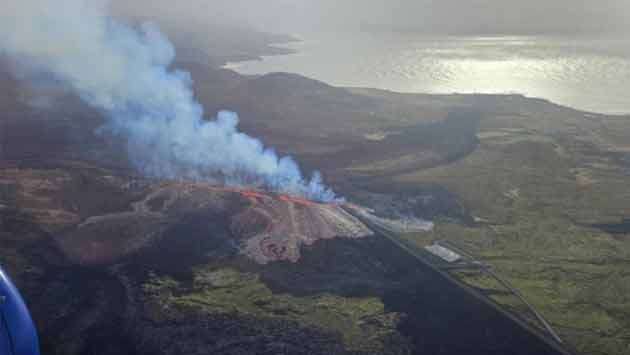A volcano erupted south of Iceland’s capital on Tuesday (April 1), spewing lava and smoke in a fiery display of orange and red, prompting the evacuation of tourists and residents, but air traffic remained normal.
The North Atlantic island nation, known as a land of ice and volcanoes for its many glaciers and volcanoes, has seen 11 eruptions south of Reykjavik since 2021, when dormant geological systems reactivated after about 800 years.
“Warning: An eruption has begun,” the Icelandic Meteorological Office said in a statement.
The eruption broke through protective barriers near the fishing town of Grindavík, prompting the evacuation of residents who had returned after previous eruptions, but many homes have remained empty for more than a year.
“Lava is currently flowing into the barrier, but it has been a very limited eruption so far,” said Rik Pedersen, head of the Nordic Volcanology Centre.
Emergency services also evacuated the nearby Blue Lagoon luxury spa in the hours before the eruption, as geologists had warned.
Pedersen said the eruption was similar to an eruption that threw lava into Grindavík in January 2024.
The eruptions so far on the Reykjavík peninsula have not directly affected the capital, Reykjavik, and have not caused significant ash to be released into the stratosphere, avoiding air traffic disruptions.
Icelandic experts predict that so-called rift eruptions, characterized by lava flowing from long cracks in the Earth’s crust rather than from a single volcanic vent, could recur for decades or centuries.
The North Atlantic island, home to nearly 400,000 people, attracts thousands of tourists each year who come to explore its rugged nature, including geysers, hot springs and volcanoes.
Iceland lies adjacent to the Mid-Atlantic Ridge, where the Eurasian and North American tectonic plates are separating, and is largely covered in black lava fields, contrasted by glaciers and blankets of bright green moss.



